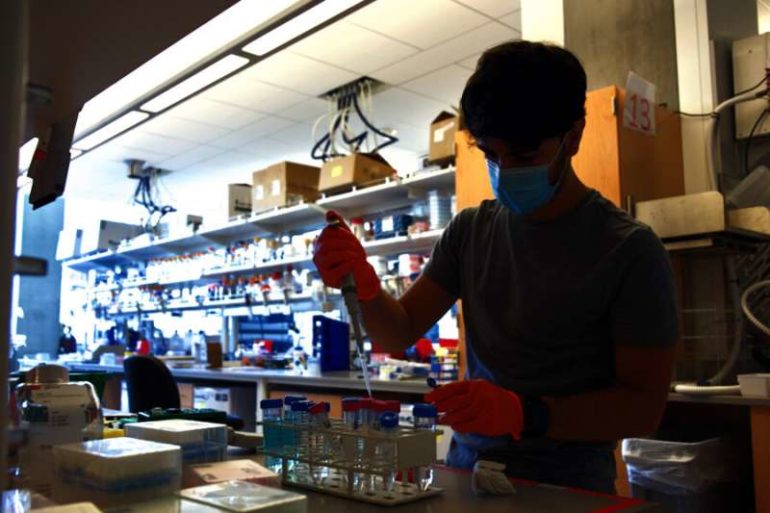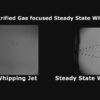Scientists have created a new way to detect the proteins that make up the pandemic coronavirus, as well as antibodies against it. They designed protein-based biosensors that glow when mixed with components of the virus or specific COVID-19 antibodies. This breakthrough could enable faster and more widespread testing in the near future. The research appears in Nature.
To diagnose coronavirus infection today, most medical laboratories rely on a technique called RT-PCR, which amplifies genetic material from the virus so that it can be seen. This technique requires specialized staff and equipment. It also consumes lab supplies that are now in high demand all over the world. Supply-chain shortfalls have slowed COVID-19 test results in the United States and beyond.
In an effort to directly detect coronavirus in patient samples without the need for genetic amplification, a team of researchers led by David Baker, professor of biochemistry and director of the Institute for Protein Design at UW Medicine, used computers to design new biosensors. These protein-based devices recognize specific molecules on the surface of the virus, bind to them, then emit light through a biochemical reaction.
Antibody testing can reveal whether a person has had COVID-19 in the past. It is being used to track the spread of the pandemic, but it ,too, requires complex laboratory supplies and equipment.
The same team of UW researchers also created biosensors that glow when mixed with COVID-19 antibodies. They showed that these sensors do not react to other antibodies that might also be in the blood, including those that target other viruses. This sensitivity is important for avoiding false-positive test results.
“We have shown in the lab that these new sensors can readily detect virus proteins or antibodies in simulated nasal fluid or donated serum, said Baker. “Our next goal is to ensure they can be used reliably in a diagnostic setting. This work illustrates the power of de novo protein design to create molecular devices from scratch with new and useful functions.”
Beyond COVID-19, the team also showed that similar biosensors could be designed to detect medically relevant human proteins such as Her2 (a biomarker and therapy target for some forms of breast cancer) and Bcl-2 (which has clinical significance in lymphoma and some other cancers), as well as a bacterial toxin and antibodies that target Hepatitis B virus.
Q&A: A COVID-19 DNA nanoswitch—a new kind of test for a new kind of virus
More information:
Alfredo Quijano-Rubio et al. De novo design of modular and tunable protein biosensors, Nature (2021). DOI: 10.1038/s41586-021-03258-z
Provided by
University of Washington
Citation:
New biosensors quickly detect coronavirus proteins and antibodies (2021, January 28)
retrieved 28 January 2021
from https://phys.org/news/2021-01-biosensors-quickly-coronavirus-proteins-antibodies.html
This document is subject to copyright. Apart from any fair dealing for the purpose of private study or research, no
part may be reproduced without the written permission. The content is provided for information purposes only.



